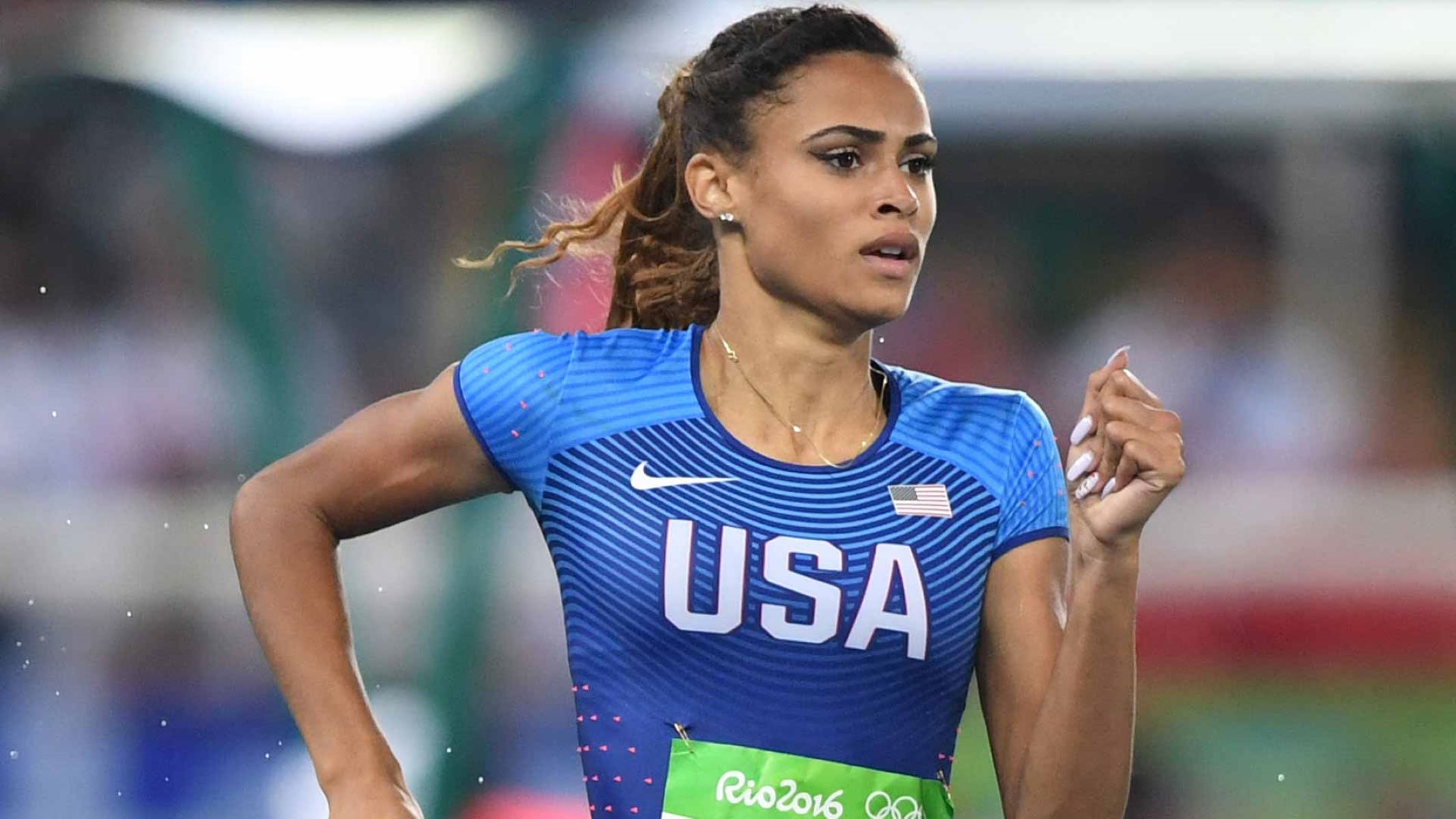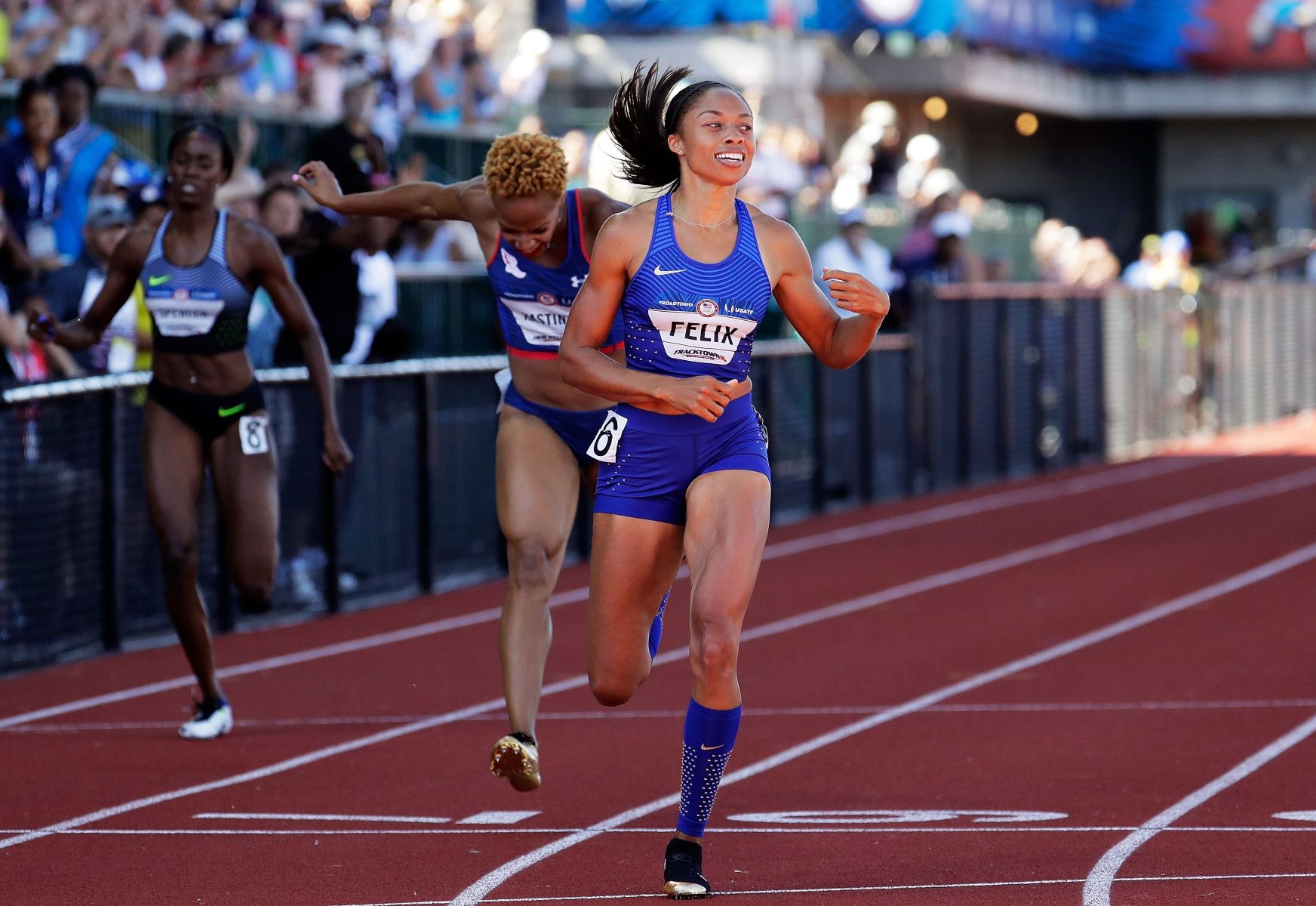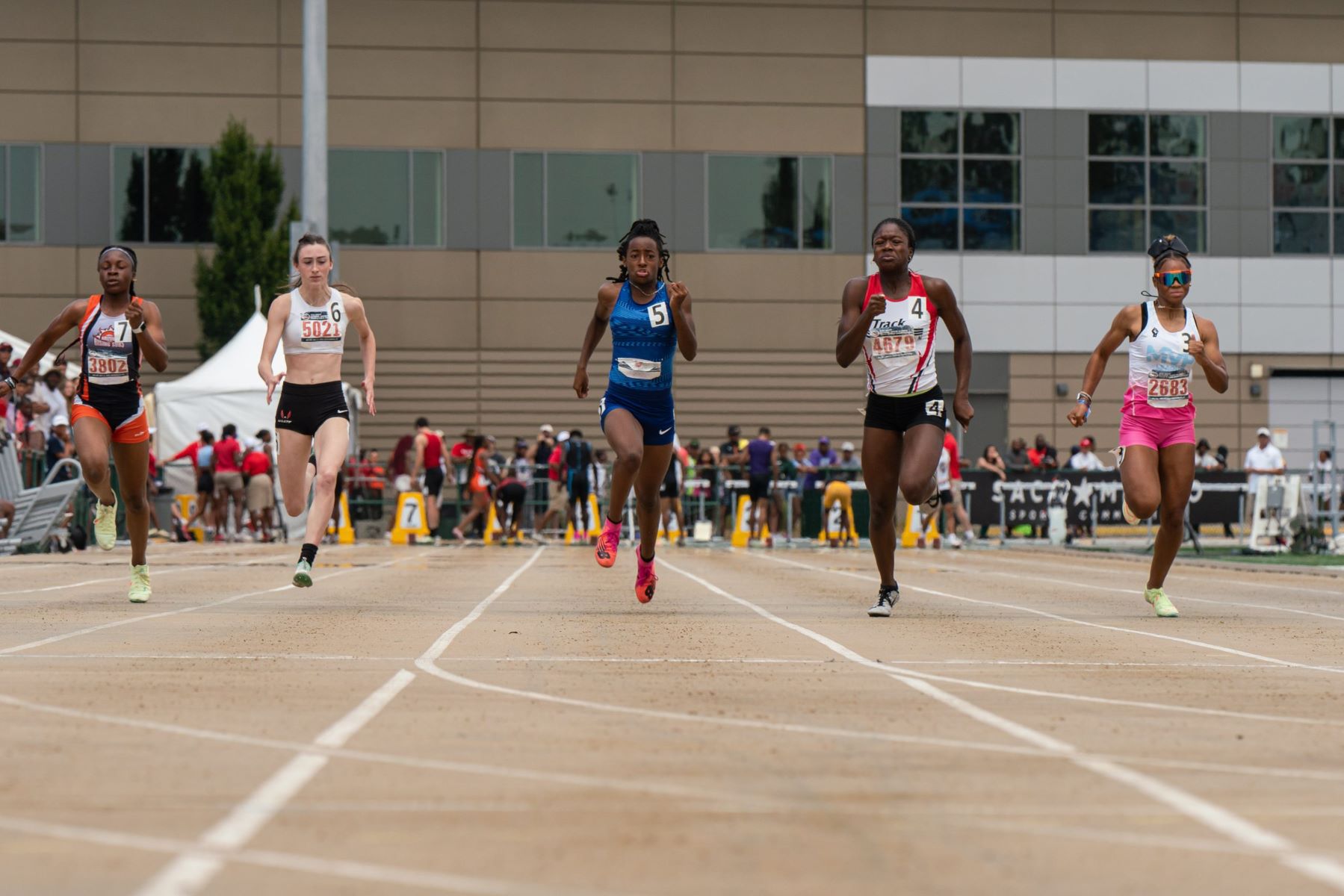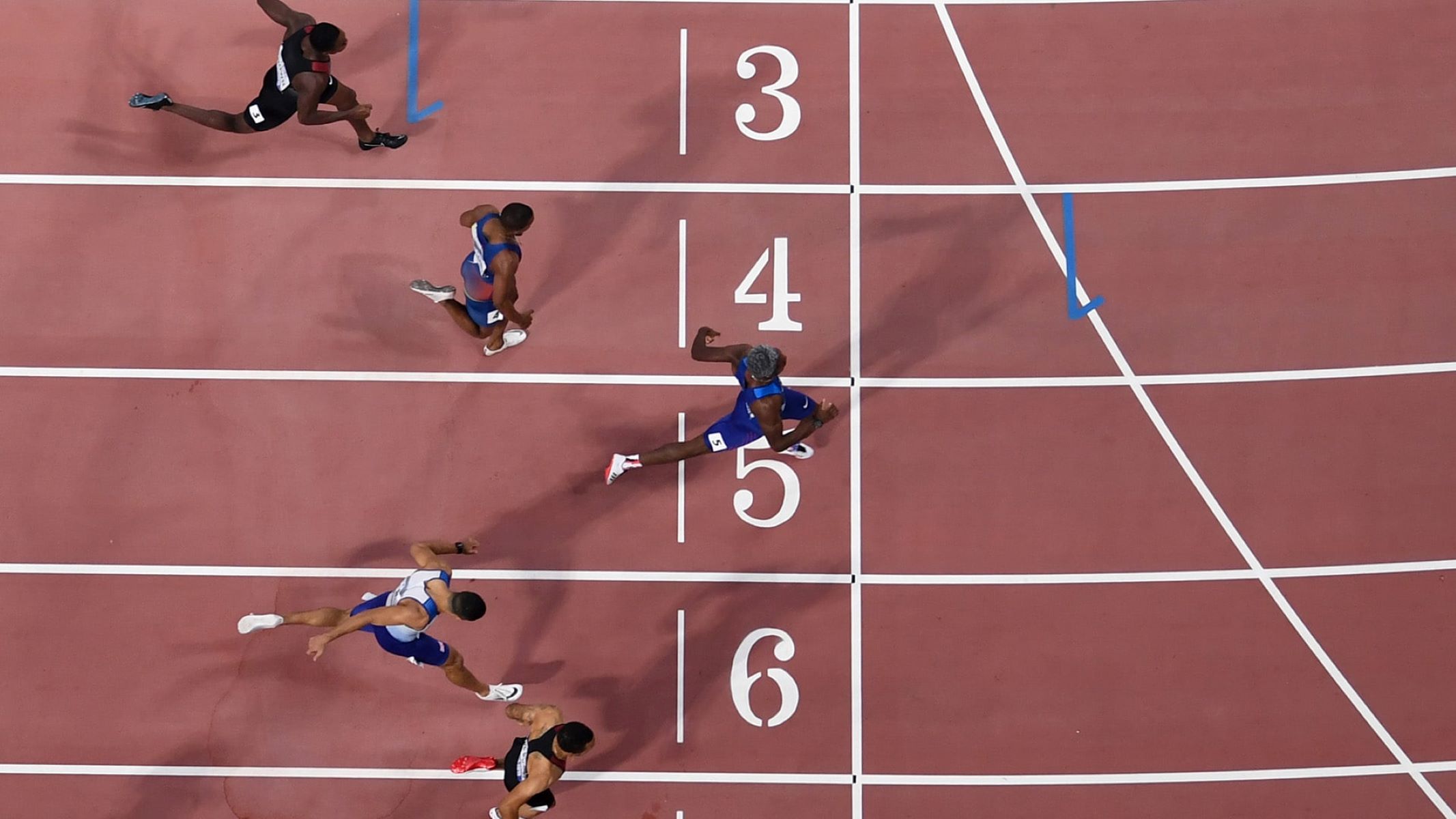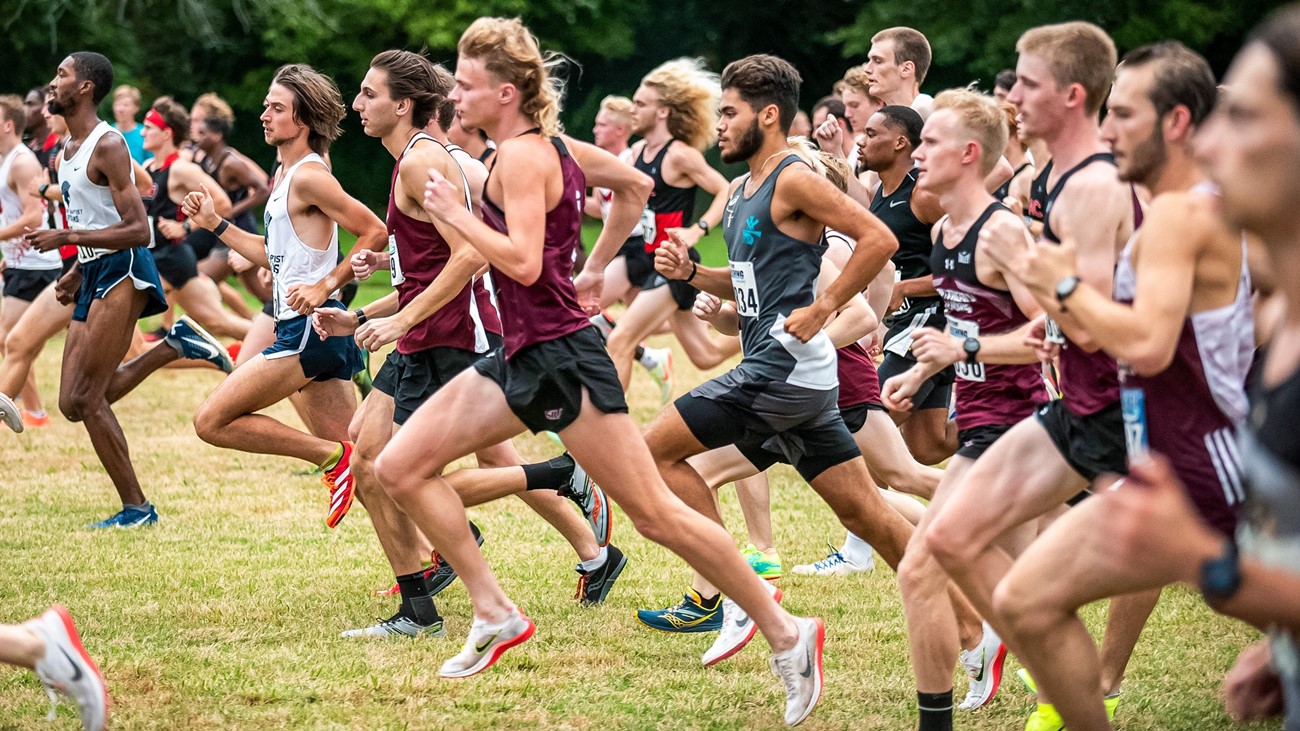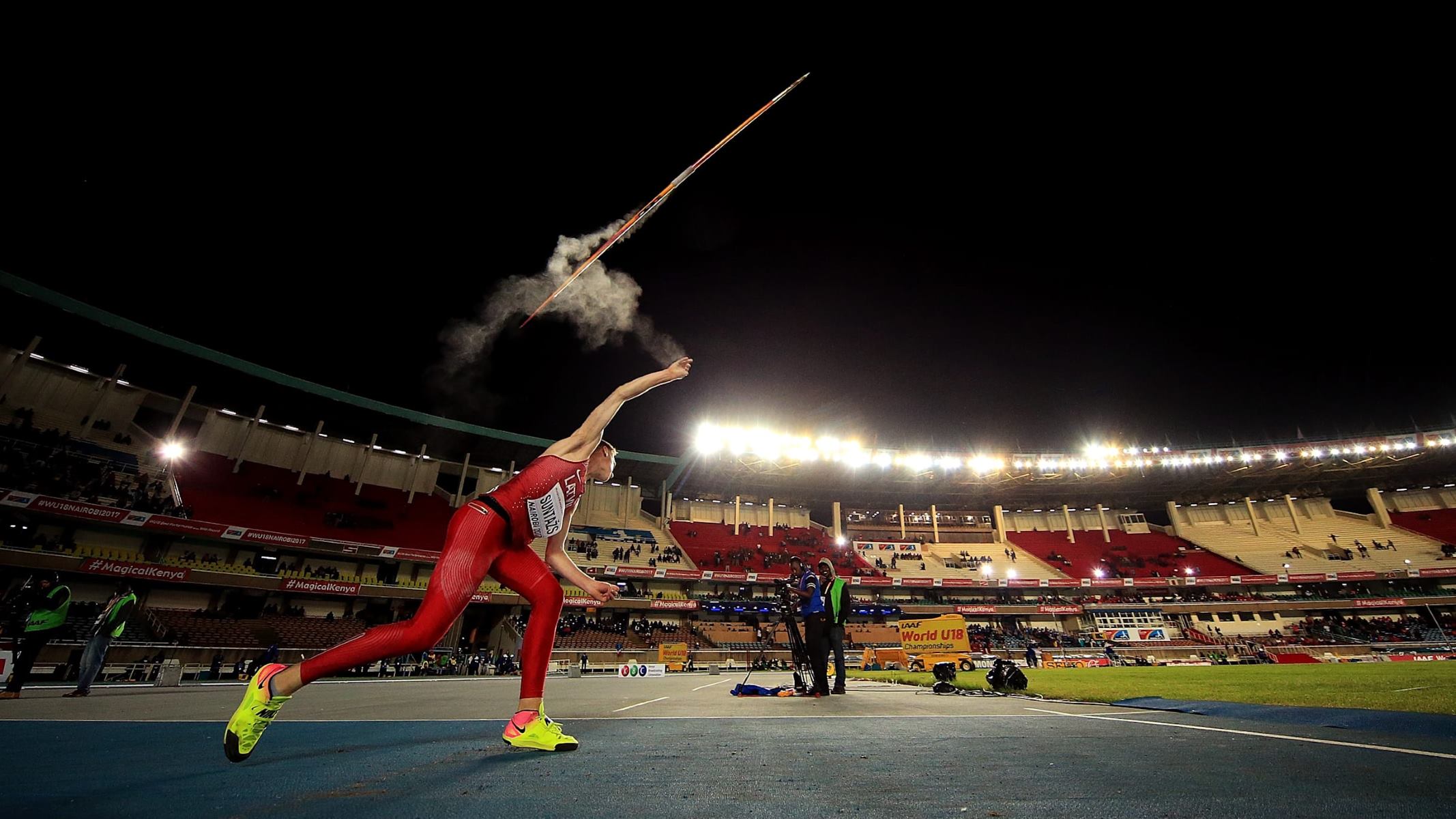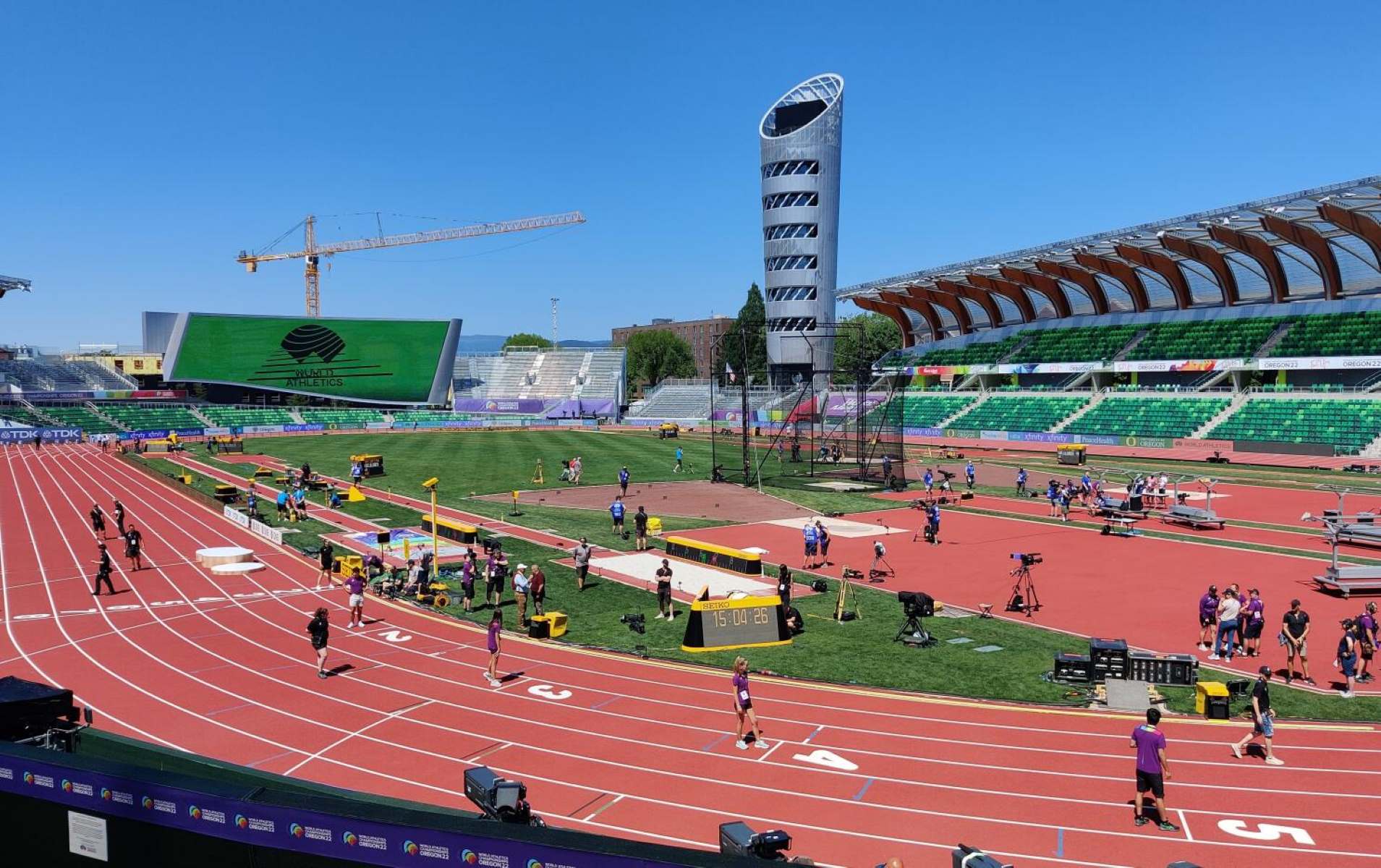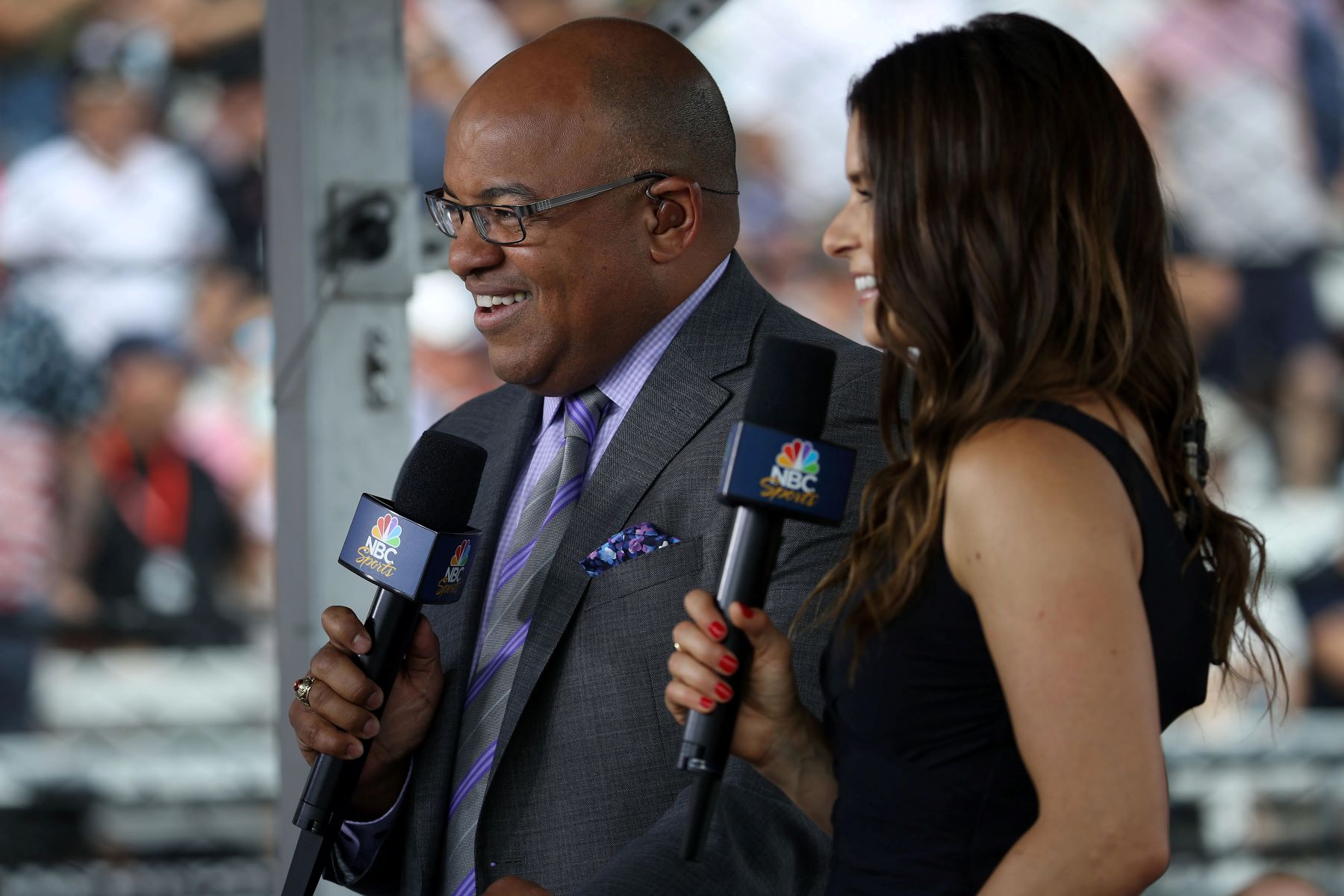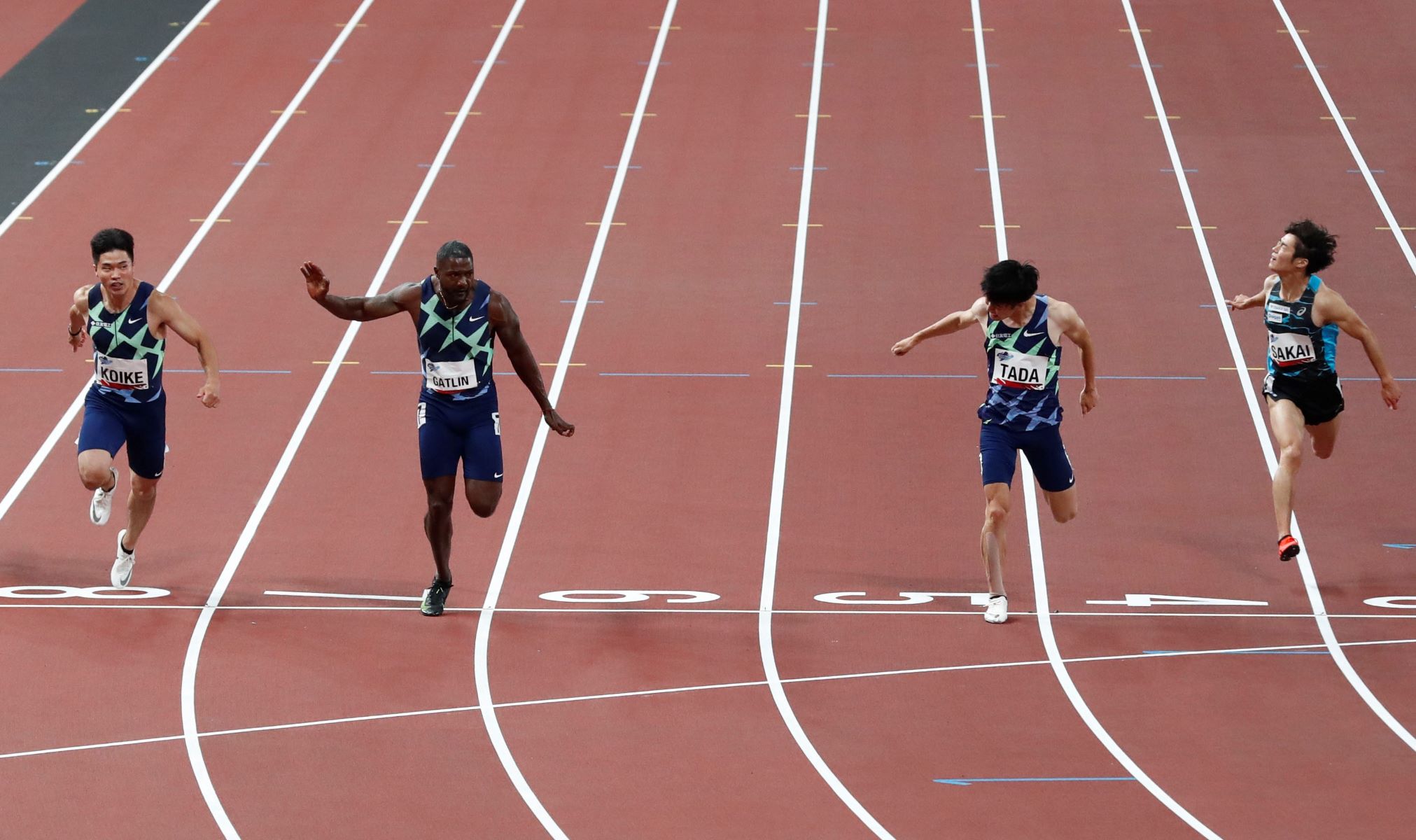Home>Misc>Featured>What Is The Age Requirement For Track And Field In Olympics
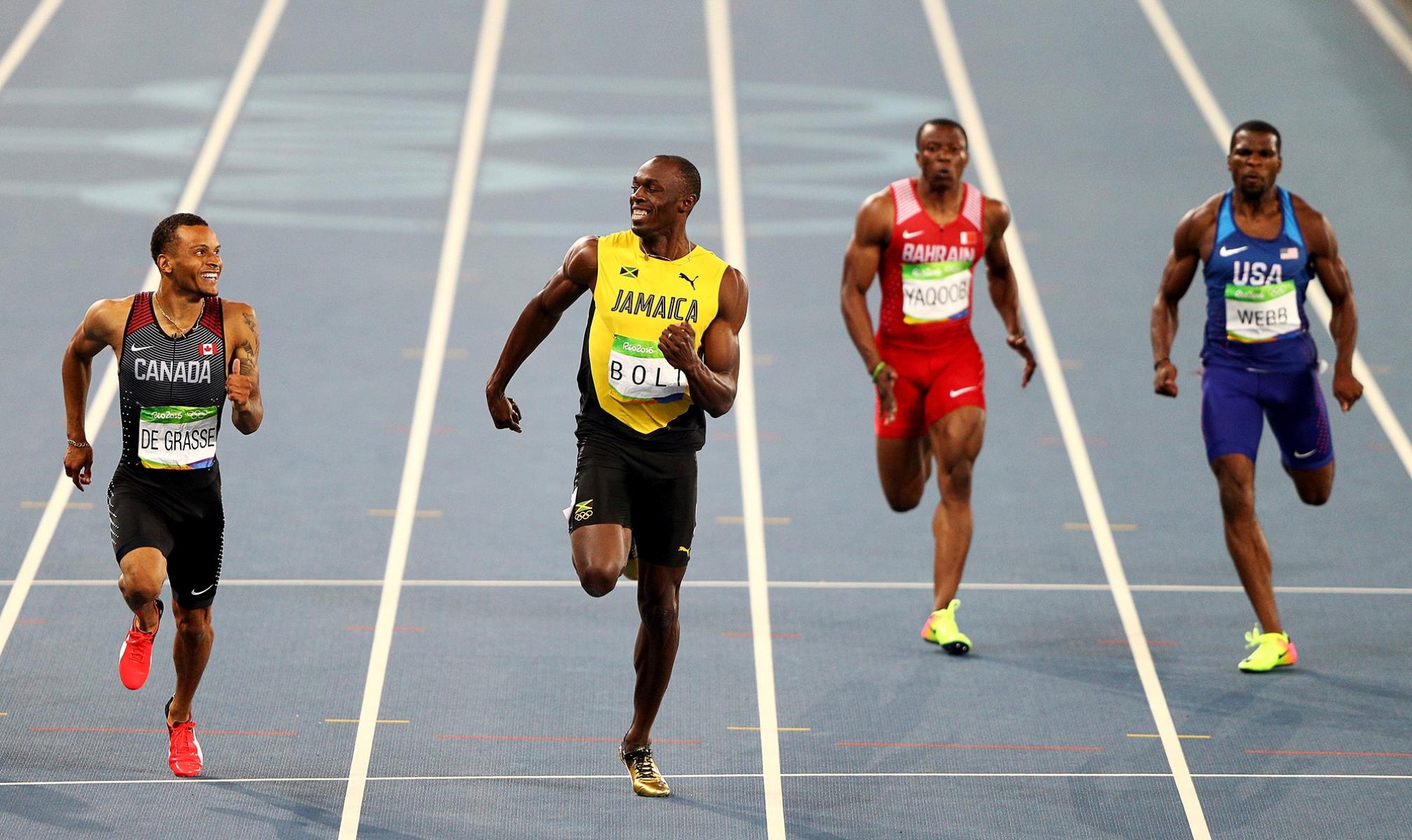

Featured
What Is The Age Requirement For Track And Field In Olympics
Modified: January 2, 2024
Discover the age requirement for participating in track and field at the Olympics. Find out all the details in this featured article.
Introduction
Track and field events have been an integral part of the Olympic Games since their inception in ancient Greece. Athletes from around the world compete in a variety of disciplines, showcasing their speed, strength, and endurance on the grandest stage of them all. But have you ever wondered about the age requirements for these events? How young can an athlete be to participate in Olympic track and field? In this article, we will explore the age restrictions imposed on track and field athletes in the Olympics, as well as any exceptions and special cases that may apply.
The Olympic Games feature a wide range of track and field events, including sprints, hurdles, middle-distance races, relays, long jumps, high jumps, pole vaults, shot puts, discus throws, and more. These events require a combination of physical prowess, technical skill, and mental resilience. Athletes spend years honing their abilities and pushing their limits to earn a spot on the Olympic team.
When it comes to the age requirements for track and field athletes in the Olympics, there are specific guidelines established by the International Association of Athletics Federations (IAAF) and the International Olympic Committee (IOC). These guidelines aim to ensure fair competition and the safety of young athletes.
The minimum age requirement for track and field events in the Olympics is a topic of much debate and consideration. The IOC has set the age limit at 16 years old for all athletes participating in the Olympic Games. This rule applies to all sports, including track and field. Athletes must reach this age by a specified date before the start of the Games to be eligible to compete. However, it is important to note that each individual event may have its own set of age requirements and considerations.
Age restrictions for specific track and field events take into account the physical demands and technical skills required for each discipline. These restrictions help to ensure the safety and well-being of the athletes, as well as maintain competitive fairness. Let’s take a closer look at the age requirements for some of the most popular track and field events in the Olympics.
Olympic Track and Field Events
The Olympic Games showcase a wide array of track and field events that test the limits of human athletic ability. From lightning-fast sprints to gravity-defying jumps, these events captivate audiences around the world. Let’s take a closer look at some of the most popular track and field events in the Olympics:
1. Sprints: The sprint events, including the 100m, 200m, and 400m races, are all about explosive speed. Athletes burst out of the blocks and race towards the finish line, pushing their bodies to the limit in a matter of seconds.
2. Hurdles: Hurdling events add an extra challenge to the sprints by placing obstacles in the athletes’ path. Competitors must maintain their speed while gracefully leaping over a series of hurdles, showcasing agility and precise technique.
3. Middle-Distance Races: Middle-distance races, such as the 800m and 1500m events, require a combination of speed and endurance. Athletes must strike a balance between sustained speed and strategic pacing to outlast their competitors.
4. Relays: Relays are team events where athletes pass a baton to their teammates in a fast-paced and thrilling race. The 4x100m and 4x400m relays require seamless coordination and lightning-fast exchanges to achieve victory.
5. Long Jump: In the long jump, athletes sprint down the runway before launching themselves into the air to cover as much distance as possible. Technique, speed, and explosive power all play a crucial role in achieving an optimal jump.
6. High Jump: High jumpers aim to clear a horizontal bar by leaping over it without knocking it off. It requires a combination of speed, flexibility, and precise body control to clear increasingly higher heights.
7. Pole Vault: The pole vault event involves using a long, flexible pole to clear a bar set at a significant height. Athletes must generate speed, coordination, and explosive power to navigate over the bar successfully.
8. Shot Put: Shot put is a test of strength, where athletes must throw a heavy metal ball as far as possible. It requires a combination of power and technique to generate maximum distance.
9. Discus Throw: Discus throwers aim to hurl a heavy discus as far as possible. This event demands strong rotational power, precise technique, and exceptional arm strength.
10. Javelin Throw: Javelin throwers launch a spear-like implement into the air with the goal of achieving maximum distance. It relies on speed, technique, and explosive power to propel the javelin far beyond the competitor’s reach.
These track and field events represent the pinnacle of human athletic achievement and push the boundaries of what the human body can accomplish. Athletes dedicate their lives to mastering their chosen disciplines, and their performances in the Olympics inspire generations to come.
Age Restrictions in Olympic Track and Field
Participating in the Olympic Games is an incredible achievement for any athlete, but there are specific age restrictions in place to ensure fair competition and protect the well-being of young participants. The age requirements for track and field events are governed by the International Association of Athletics Federations (IAAF) and the International Olympic Committee (IOC). Let’s explore these age restrictions in more detail.
The minimum age requirement for track and field events in the Olympics is set by the IOC. Athletes must be at least 16 years old on a specified date before the start of the Games to be eligible to compete. This minimum age requirement applies to all sports in the Olympics, including track and field.
While 16 is the minimum age to participate, there are no specific maximum age limits in place for track and field events. As long as athletes meet the minimum age requirement and qualify through their national Olympic committees, they can continue to participate in their respective events. This allows athletes of all ages to showcase their skills and compete at the highest level.
It’s important to note that each individual track and field event may have its own set of age requirements and considerations. These age restrictions are put in place to ensure that athletes possess the physical development, technical skills, and mental maturity necessary to compete safely and effectively. For example, events that involve high-impact movements or require a higher level of coordination may have stricter age requirements to prevent injury.
In addition to the age restrictions, there are also rules regarding the eligibility of athletes who have previously competed for another country. The Olympic Charter states that athletes can only represent a different country if they have been released by their previous national Olympic committee and satisfy the nationality requirements of their new country. This ensures that athletes compete for the country they truly represent and maintain the integrity and spirit of the Olympic Games.
It’s worth mentioning that age restrictions can vary slightly between different international and national competitions. While the IOC sets the minimum age requirement for the Olympic Games, individual countries and competitions may have their own rules and regulations regarding age eligibility. Athletes and their coaches must familiarize themselves with these guidelines to ensure compliance and avoid any potential disqualifications.
Overall, the age restrictions in Olympic track and field events aim to strike a balance between fair competition and the well-being of young athletes. These rules ensure that athletes have the necessary physical and technical abilities to compete safely and effectively while providing opportunities for athletes of all ages to showcase their talents on the world stage.
The Minimum Age Requirement for Track and Field Events
When it comes to track and field events in the Olympic Games, there is a minimum age requirement that athletes must meet to be eligible to compete. The International Olympic Committee (IOC) has set the minimum age at 16 years old for all athletes participating in the Olympics, including track and field.
This age requirement is in place to ensure that athletes possess the necessary physical development, technical skill, and mental maturity to compete at such a high level. The physical demands of track and field events, such as sprints, jumps, and throws, can be intense and potentially lead to injury if athletes are not adequately prepared.
By setting the minimum age at 16, the IOC aims to strike a balance between allowing young athletes to showcase their talents on the Olympic stage and ensuring their safety and well-being. At this age, athletes have had time to develop their athletic abilities and are better equipped to handle the rigors of top-level competition.
In addition to the physical considerations, the minimum age requirement also takes into account the mental maturity of the athletes. Competing at the Olympics is not only physically demanding but also mentally challenging. Athletes must be able to handle the pressure, deal with high-stakes competitions, and manage the expectations that come with representing their country on a global stage.
However, it is essential to note that individual track and field events may have their own specific age requirements and considerations beyond the minimum age of 16. Certain events, such as those involving high-impact movements or greater technical complexity, may have stricter age restrictions to ensure the safety and fair competition of the athletes.
It’s also worth mentioning that the minimum age requirement applies to athletes at the start of the Olympic Games. Athletes must have reached the age of 16 by a specified date before the Games begin to be eligible to compete. This ensures that all athletes meet the age requirement consistently and prevents any potential age manipulation.
Overall, the minimum age requirement for track and field events in the Olympics ensures that young athletes are physically and mentally prepared to compete at the highest level. By establishing this age requirement, the IOC promotes fairness, safety, and the integrity of the Olympic Games, providing a platform for talented athletes to showcase their abilities while protecting their well-being.
Age Requirements for Specific Track and Field Events
While the minimum age requirement for track and field events in the Olympics is set at 16 years old, it’s important to note that each individual event may have its own set of age requirements and considerations. These specific age requirements are put in place to ensure that athletes possess the physical development, technical skills, and maturity necessary to compete safely and effectively. Let’s explore the age restrictions for some of the most popular track and field events in the Olympics:
1. Pole Vault: Due to the technical complexity and risk involved, many pole vault competitions require athletes to be at least 18 years old to compete. This age requirement ensures that athletes have enough physical and mental maturity to handle the challenges of the event safely.
2. Marathon: The marathon, which covers a distance of 42.195 kilometers, is a grueling endurance event. It typically has a minimum age requirement of 20 years old to participate. This restriction is in place to protect the health and well-being of athletes due to the demanding nature of the event.
3. Decathlon/Heptathlon: The decathlon, consisting of ten events, and the heptathlon, consisting of seven events, have varying age requirements. Usually, athletes must be at least 18 years old to compete in these multi-discipline events. The age restriction ensures that athletes possess the necessary physical abilities and technical skills to excel in multiple events.
4. Hurdles: Hurdling events often have no specific age restrictions beyond the minimum age requirement of 16. However, some competitions may have age categories based on youth divisions, where athletes compete against others in their age group.
5. Middle-Distance Races: For middle-distance races like the 800m and 1500m events, there are generally no specific age restrictions. As long as athletes meet the minimum age requirement of 16, they can compete in these events.
6. Long Jump and High Jump: Long jump and high jump events typically do not have age restrictions beyond the minimum age requirement. Athletes of all ages can participate as long as they meet the minimum age of 16.
It’s important for athletes and their coaches to familiarize themselves with the age requirements of specific events, as these can vary between competitions and governing bodies. Age requirements are put in place to ensure fair competition, maintain safety, and protect the integrity of the sport. They serve as guidelines to ensure that athletes are ready to compete at a certain level physically, technically, and mentally.
Additionally, it’s worth mentioning that there may be age categories or youth divisions in certain competitions where athletes compete against others in their age range. These categories provide opportunities for athletes to compete against peers of similar age and experience, promoting fair and competitive environments.
Overall, age requirements for specific track and field events aim to strike a balance between allowing talented athletes to participate and ensuring their safety and well-being. They play a crucial role in maintaining the fairness, integrity, and excitement of track and field competitions in the Olympics and other international events.
Exceptions and Special Cases
While there are general age requirements for track and field events in the Olympics, there are also exceptions and special cases that may allow athletes who fall outside of the typical age range to participate. These exceptions are usually made in exceptional circumstances and are subject to specific criteria and approval. Let’s explore some of the exceptions and special cases that exist:
1. Talent and Potential: In some cases, exceptionally talented young athletes who have not yet reached the minimum age requirement may be granted special dispensation to compete in certain events. This is typically done if they have demonstrated exceptional ability and potential in their respective discipline and have been identified as future stars of the sport.
2. Exceptional Circumstances: In exceptional circumstances, such as when an athlete has experienced a significant delay in their athletic development due to injury, illness, or other factors, they may be allowed to compete even if they fall below the minimum age requirement. These cases are considered on an individual basis and are subject to additional documentation and approval.
3. Special Age Categories: Some competitions may offer special age categories or divisions specifically designed for younger athletes. These categories provide opportunities for younger athletes to compete against others in their age range, promoting fair and balanced competition.
4. National Governing Body Discretion: In certain cases, national governing bodies have the discretion to determine the eligibility of athletes for participation in track and field events. They may make exceptions based on unique circumstances or special considerations, provided the decision aligns with the rules and regulations set by the international governing bodies.
It’s important to note that exceptions and special cases are relatively rare and are carefully considered to maintain the fairness and integrity of the sport. Athletes and their coaches must provide detailed documentation and reasoning to support their request for an exception, and the final decision lies with the relevant governing bodies or committees.
These exceptions and special cases exist to ensure that deserving athletes have the opportunity to showcase their skills and compete at the highest level, even if they do not fit within the typical age requirements. However, it’s important to maintain a balance between giving younger athletes opportunities and ensuring their health, safety, and development are not compromised.
Overall, exceptions and special cases in track and field events provide flexibility and acknowledge the unique circumstances and talent of individuals. They serve as a reminder that the sport is not solely bound by age restrictions but also recognizes exceptional abilities when they arise.
Age Verification and Documentation
Ensuring the accuracy and validity of athletes’ ages in track and field events is crucial to maintaining fair competition and upholding the integrity of the sport. Age verification and documentation processes are in place to confirm athletes’ eligibility and prevent age manipulation. Let’s explore how age verification is carried out and the documentation required:
The responsibility of age verification lies with the respective national Olympic committees and the international governing bodies of athletics. Athletes must provide sufficient evidence to prove their age and compliance with the minimum age requirement for participation in track and field events.
For most athletes, age verification begins with the submission of a government-issued identification document, such as a passport or a birth certificate. These documents provide legal proof of an athlete’s date of birth and are considered the primary evidence for age verification purposes.
In some cases, additional documentation may be required to support the age claim. This can include medical records, school certificates, or documents from relevant authorities that prove the athlete’s age. These documents help establish a comprehensive timeline and provide further substantiation for the athlete’s age.
It’s important to note that age verification processes may differ between national and international competitions. National governing bodies may have additional requirements or specific procedures in place to verify the ages of athletes participating in domestic competitions.
In certain instances, age verification may be required for specific events or categories where age restrictions are more stringent. This is particularly common in youth competitions or age-group championships, where stricter measures are implemented to ensure fair competition among athletes of the same age range.
Age manipulation, also known as age cheating, is a serious concern in sports, including track and field. Athletes or their representatives attempting to falsify age documentation can face severe consequences, including disqualification, bans, and damage to their reputation. Stringent age verification processes are in place to deter such practices and maintain the fairness and credibility of competitions.
International governing bodies closely monitor the age verification process and may conduct further investigations or audits, including interviews with athletes, coaches, and parents or guardians, to ensure compliance and prevent age-related fraud.
In recent years, advancements in technology have allowed for the development of more sophisticated age verification methods, such as bone density measurements and dental examinations. These methods can provide further insights into an athlete’s age by assessing physical development markers.
Overall, age verification and documentation are essential components of track and field competitions, providing transparency, fairness, and ensuring that athletes meet the minimum age requirements. By rigorously verifying athletes’ ages, the sport can maintain its integrity and uphold the principles of fair competition.
Conclusion
Age requirements play a vital role in Olympic track and field events, ensuring fair competition and protecting the well-being of young athletes. The minimum age requirement of 16, set by the International Olympic Committee (IOC), guarantees that athletes are physically and mentally prepared for the rigorous demands of the sport. Additionally, specific track and field events may impose additional age restrictions based on the physical demands and technical complexities of each discipline.
Exceptions and special cases may exist for athletes who display exceptional talent, experience exceptional circumstances, or compete in specific age categories. These allowances are carefully reviewed on an individual basis, considering factors such as talent potential, injury delays, or national governing body discretion.
Age verification and documentation processes are in place to ensure the accuracy of athletes’ ages and prevent age manipulation. Athletes must provide government-issued identification documents, such as passports or birth certificates, as primary evidence. Additional documentation, including medical records or school certificates, may be required to support age claims and establish a comprehensive timeline.
Overall, age requirements, exceptions, and age verification processes are fundamental to track and field events in the Olympics. They maintain fair competition, protect athletes’ well-being, and preserve the integrity of the sport. By adhering to these regulations, Olympic track and field events continue to uphold the spirit of the Games and provide a platform for athletes to demonstrate their athletic prowess on the world stage.
